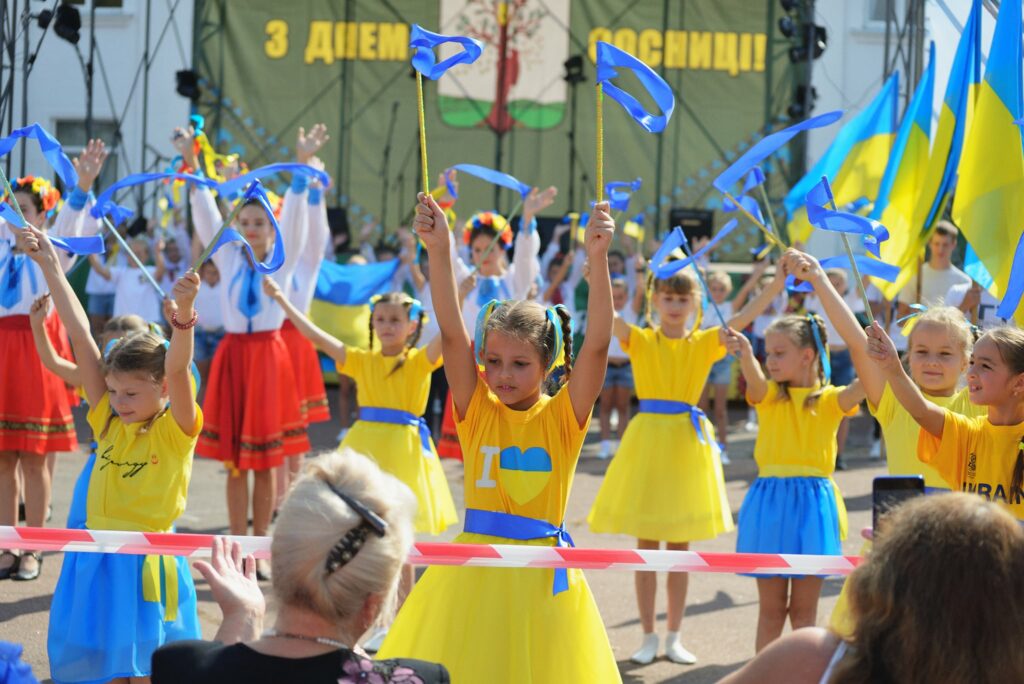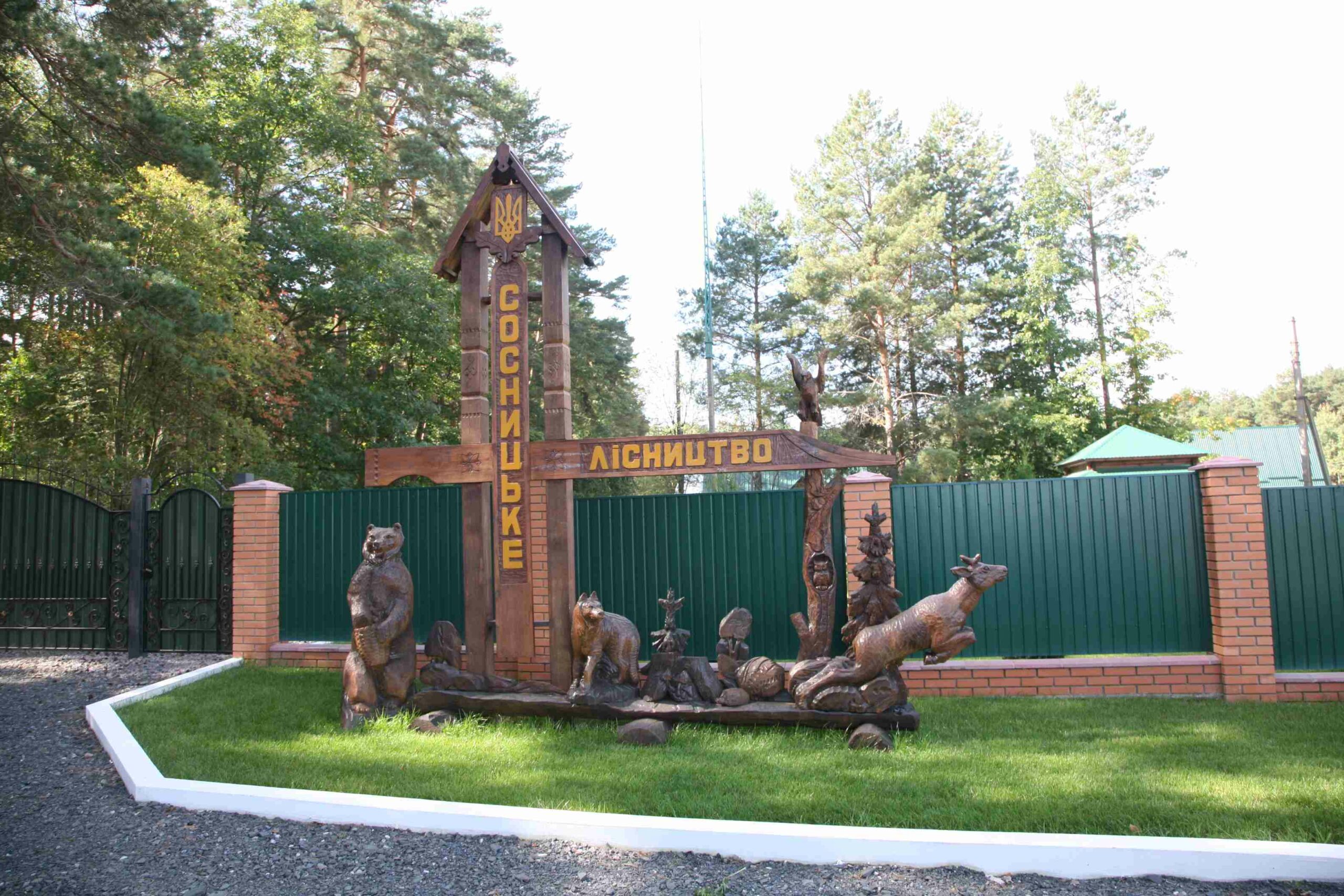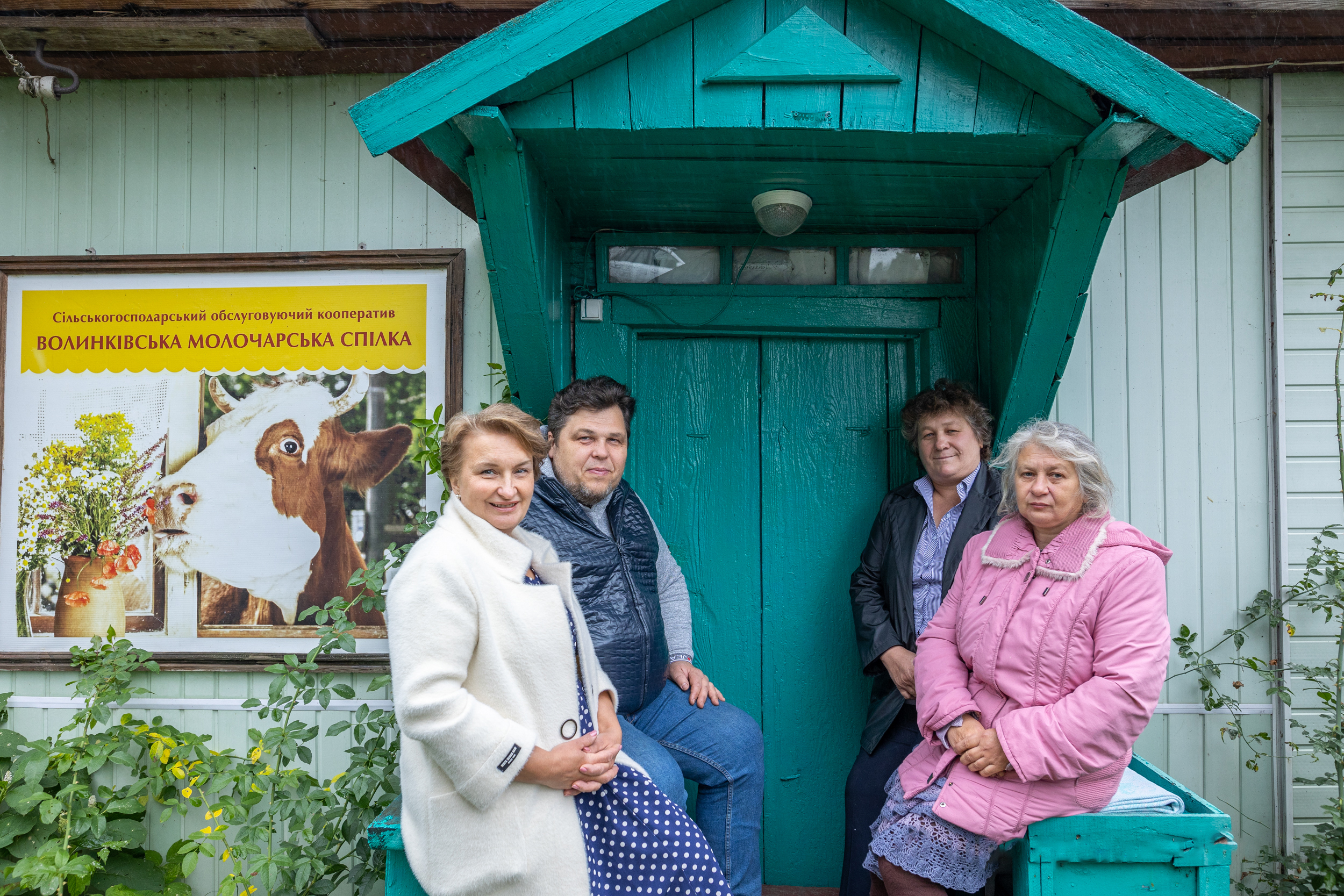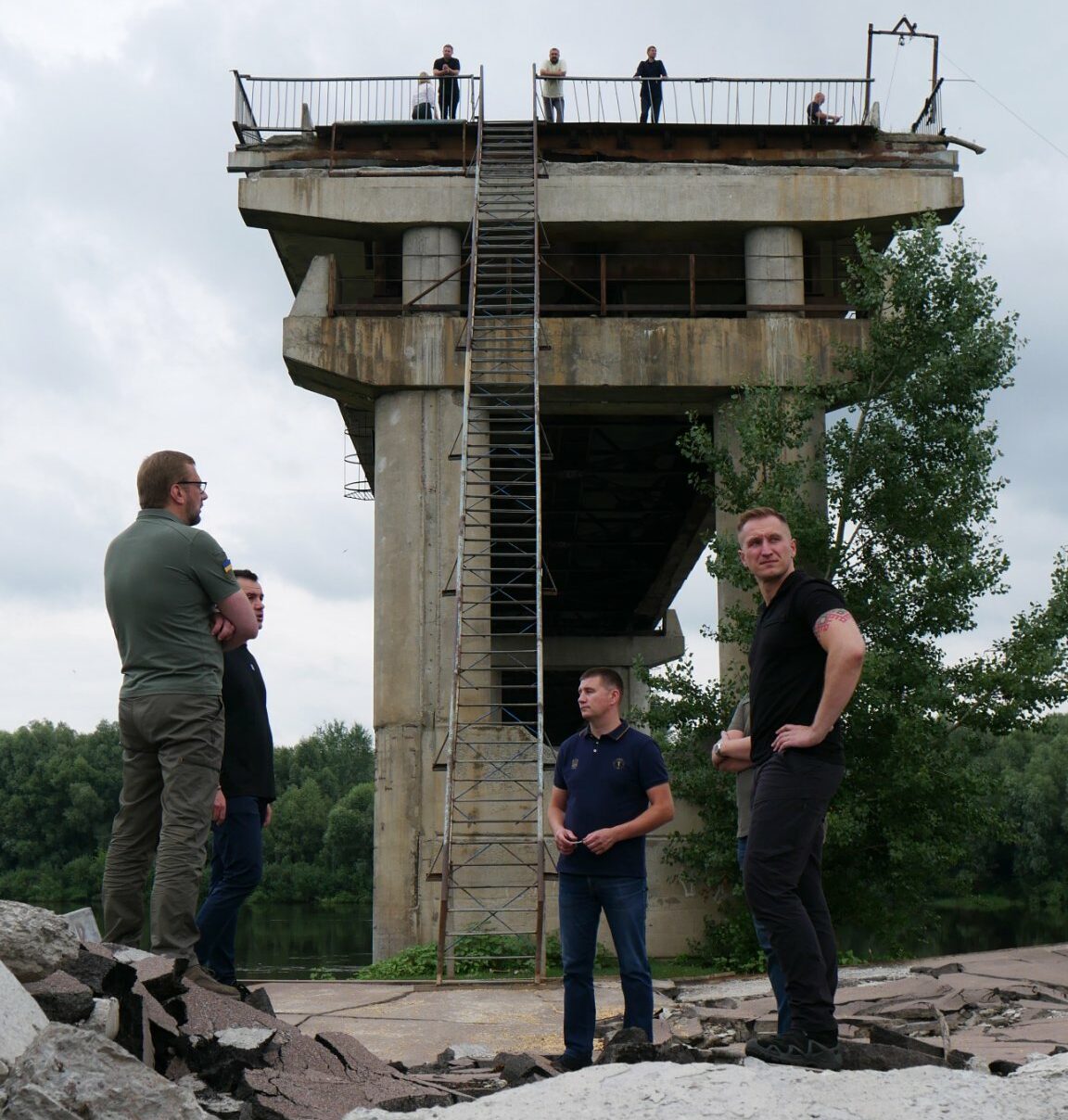This website uses cookies so that we can provide you with the best user experience possible. Cookie information is stored in your browser and performs functions such as recognising you when you return to our website and helping our team to understand which sections of the website you find most interesting and useful.
Sosnytsia Community

The Sosnytsia community was formed on 07 July 2017.
Population: 15,392 residents (before the beginning of the full-scale russian invasion of Ukraine)
Women – 8,146 (53%)
Men – 7,246 (47%)
Children under 18 – 2,496
Pensioners – 4,647
Internally displaced persons – 1,800
The Sosnytsia community includes one settlement and thirty-nine villages.
History
Sosnytsia was mentioned for the first time in the Ipativ Chronicle. In 1234, Danylo Halytskyi took over several towns in the Chernihiv area, including Sosnytsia.
The name of the settlement, according to researchers, comes from the pine forest that surrounded the area. Another version is that it comes from an ancient hive.
All this time, being part of different states, Sosnytsia remained the centre of the district. A castle was built in 1634, as a result of which the settlement upgraded to the category of towns.
In 1668, the population of the Sosnytsia area took an active part in the uprising against the authorities of the moscow state. During the Hetmanate, Sosnytsia and the area around it was characterized by the Cossack self-government and the Town Hall self-government at the same time (a simplified version of the Magdeburg Rights).

In 1865, the district Zemsky Assembly and Board began to function, and in 1872 the Town Duma was elected. The town had its Zemsky County Hospital, Women Zemsky One-Class College and Grammar School, Higher Primary School, Men Grammar School and two one-class colleges for boys. In 1912, a craft school was opened. In 1910, the Sosnytsia People’s Theatre was organized, in the drama team of which Oleksandr Dovzhenko played. In 1915, the Sosnytsia Kobza workshop was opened.
During 1954-1958, an industrial enterprise, Mizhkolhospbud, a bakery, and a road operational section began to operate.
In 1963, a sewing factory was created at the Shveiprom facility. Now it is Elite PJSC.
In 1968, the butter mill was expanded and a modern cheese factory was created on its basis. An important place in the economy of the district was the played by the hydro forest melioration station, which began to work in 1963.
In 1960, the Sosnytsia Literature Memorial Museum of the Cinema bearing the world name of Oleksandr Dovzhenko opened.

Economy and Wellbeing
The community does not have large enterprises, and its main resource, and one of its key problems at the same time, is land. Most lands are affected by radionuclides, so they cannot be cultivated. At the same time, land that can be cultivated is leased to agricultural companies and is the main source of the community’s revenues.
The community territory is rich in branched water arteries and forest plantations. The community is actively developing its woodworking industry.
A branched network of highways passes through the community, connecting the community with the regional centre and the capital of Ukraine.
Sosnytsia has an enterprise manufacturing automated systems and modern equipment for warehouses.

27% of the community area is occupied by forests, mostly mixed ones. The Sosnytsia Forestry and Sosnytsiaraiahrolishosp are in charge of the forest husbandry and provide related services.

The Ubid River is a pearl of the community. A facility, i.e. a former state sanatorium, is situated on its banks in the pine forest, which can have a significant impact on the community development. The sanatorium is not operative, but it is used for the organization of the Siverska Sich summer children’s patriotic education camp.

The Volynkivska Dairy Union receives milk on a daily basis, in the morning and in the evening. Milk is supplied by 120 people from the eight closest villages of the Sosnytsia community. However, in the future, the area of the Union’s operations is planned to expand and cover the whole community.

The community also has:
- A cheese factory producing Sosnytsia Cheese known across Ukraine.
- Women’s linen factory.
- A bakery where bread production, compared to the pre-war time, has increased eight times.
Education services in the Sosnytsia community are provided by nine kindergartens, ten schools, a children’s music school, a children’s and youth creativity centre. In addition, there are educational institutions in the community that are not run by it: Sosnytsia Accounting and Economic Professional College, Sosnytsia Professional Agrarian Lyceum and Sosnytsia Educational Rehabilitation Centre for Children with Development Deficiencies.

The medical sphere in the community is represented by the Sosnytsia Primary Medical Aid Centre running all the village paramedic centres and the Sosnytsia hospital. Furthermore, a newly built modern rural outpatient clinic was opened in the village of Chornotychi in 2021.

Voluntary fire brigades have been established in each district of the community. All the firefighters have been trained, received appropriate equipment and have their own fire engines.

Community and War
In the first months of the invasion by the russian federation, the community experienced hard times. Convoys of tanks and other military equipment were moving through the Sosnytsia community. The Sosnytsia community avoided hostilities, so it received numerous displaced persons who left their cities and villages due to shelling and hostilities.
In total, nearly 3,000 internally displaced persons were registered in the community.
Russian occupation troops moved past the Sosnytsia community. Bridges were blown up to stop the movement of the enemy troops. For this reason, the community was in isolation during the first months.
From the first days, people began to unite. The local authorities have agreed with a farmer; milk was distributed free of charge. It was transferred in the cans across the destroyed bridge using the ropes.
There was no petrol at the service stations, chemists had no medicines, and the communication was unavailable for several days. Volunteers, risking their lives, went to other towns to bring foods and medicines.
The issue of providing humanitarian aid to the victims and the low-income categories of the population gradually began to be resolved.


People of the Community
Sosnytsia community head: Andrii Portnyi.
In 2015, he was mobilized to the Chernihiv border detachment, serving on the border with the russian federation.
For the first time, Andrii Portnyi was elected head of the settlement in 2015. After the creation of the Sosnytsia Amalgamated Territorial Community, its residents elected again Andrii Portnyi as the community head. He was elected head of the community in 2020 for the third time.

Development Strategy
After the war ends and the victory is gained, the Sosnytsia community plans to return to its pre-war strategic plans.
Despite its budget limitations, the community is trying to plan its funds for the co-financing of important projects submitted as an application for grants, including as part of international technical assistance programs. Even before the war, the community actively worked on the creation of the first industrial park in the Chernihiv Region. This work is planned to be resumed after the war ends.
In 2021, the community elaborated its development strategy for 2021 – 2028. Due to the war, the updated document was not approved, but the strategic projects are planned to be implemented:
- Develop and modernize cooperative dairy, launch processing of milk produced by the members of dairy cooperatives, increase its added value, and, accordingly, profits of the members of dairy cooperatives of the community.
- Modernize the central market that will create conditions for efficient economic activities and business development.
- Modernize the tourist infrastructure and develop tourism in the community.



List of Sources
- Sosnytsia community Facebook page
- Sosnytsia community sustainable development strategy for 2021 – 2028
- Wikipedia
- Sosnytsia community official website
- Suspilne. News
- Virtual tour: Sosnytsia community

